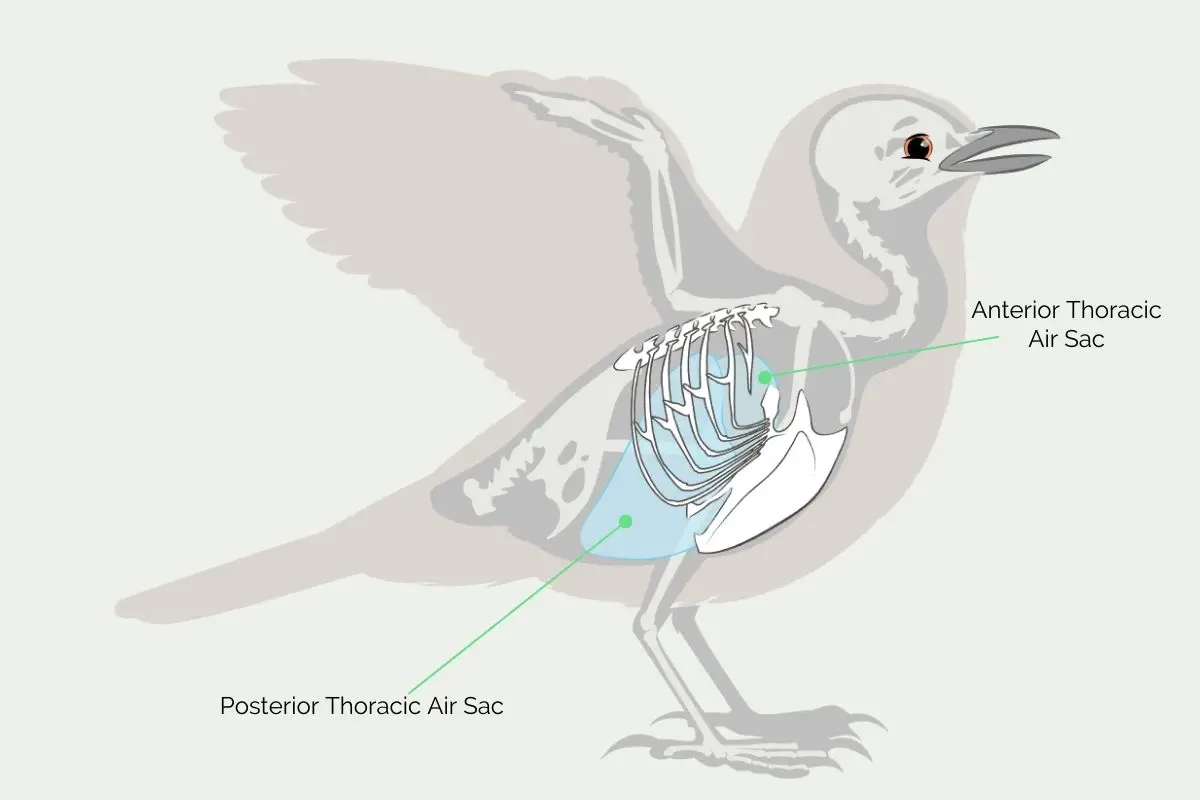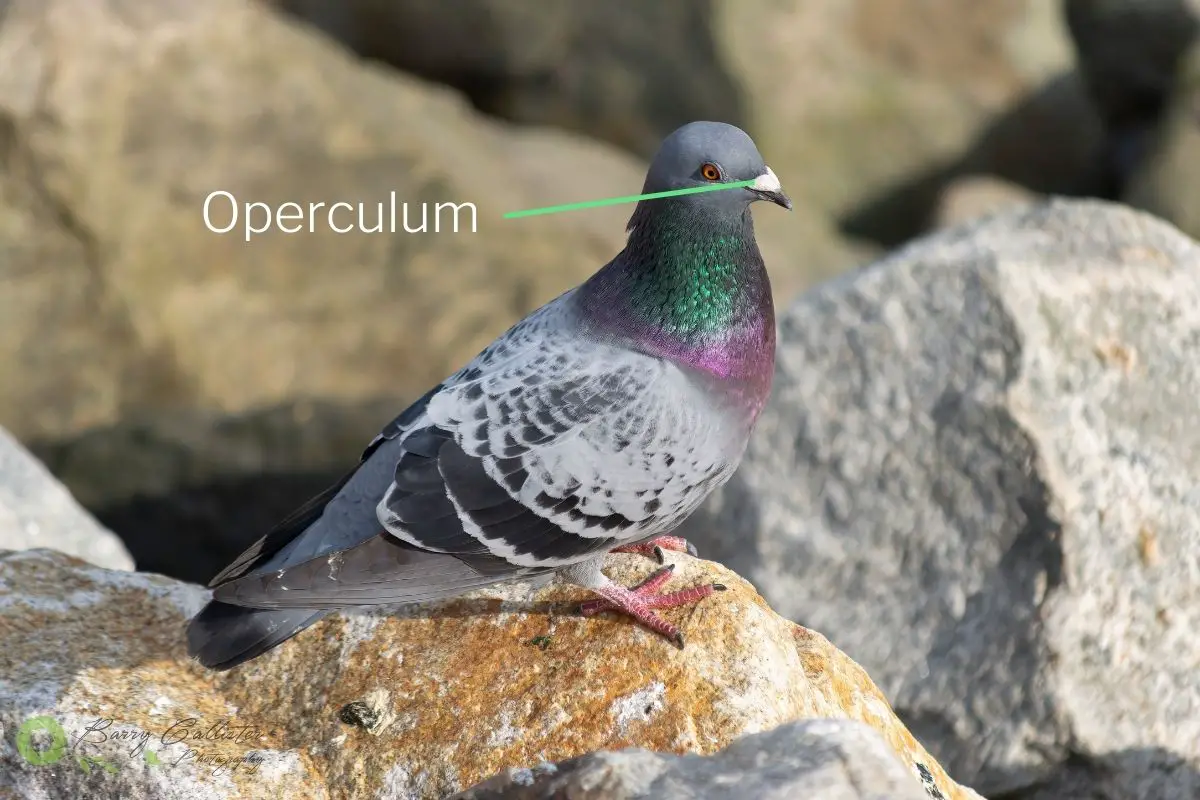The diaphragm is an important muscle in the human body without which we could not breathe. It pulls and pushes our lungs like bellows to draw in and expel air. The avian body is very different from our own in many ways but do they too have a diaphragm? This article will give you the answer and so much more information about how birds breathe.
Birds do not have a diaphragm as their lungs do not inflate. They have nine air sacs that expand to draw air in and contract to force it out. Air is constantly circulated around their body via these air sacs ensuring a constant supply of oxygen-rich air to their lungs. Read on to learn more.
In the remainder of this article, I’m going to explore the respiratory system of birds in much more detail. You will discover the complex method of breathing that ensures birds always have enough oxygen in their blood to fuel their high-energy lifestyle. You may even become a little jealous of how they do this.

As an Amazon Associate, I earn from qualifying purchases. Birdwatch World earns commissions from Amazon and similar affiliate programs from any purchases made via links in this article.
If Birds Have No Diaphragm – What Do They Have?
I have already mentioned that birds have nine air sacs in their bodies with which they breathe. Now let’s look at the anatomy of a bird’s respiratory system in more detail.
The air sacs account for around 15% of a bird’s total body volume. Depending on the species, they can have anywhere between seven and twelve sacs; most species however have nine.
The air sacs are not directly involved in the exchange of oxygen or carbon dioxide, they are thin-walled (some as thin as soap bubbles) and do not have a sufficient blood supply. They connect the main bronchial passages to each of a bird’s lungs and also hold air as it flows in and out of the body.
The air sacs also extend into a bird’s hollow bones. There are air sacs in the humerus, vertebrae, sternum, ribs, pelvis, and femur that either connect directly to the lungs or other air sacs. Other animals have air cavities in their bones but birds are the only ones in which these air cavities connect to air sacs or lungs.
Are there any birds that give birth to live young? Find out in this article here on my blog.
Why Do Birds Have No Diaphragm?
Humans and other mammals have diaphragm muscles to expand and contract their lungs; drawing in and expelling air. This is called bi-directional air flow.

The inhaled air reaches a dead end when it enters our lungs. We then have to breathe out to empty our lungs and fill them up again. This leaves our lungs without oxygenated air during exhalation which is an extremely inefficient system.
If birds were to breathe this way, they would not be able to produce the energy necessary to sustain flight. Not only that but they would also not be able to fly at such high altitudes.
The way birds breathe is called unidirectional. This means the air doesn’t just flow in and out of a bird’s body but circulates around it via the system of air sacs and its lungs. The bird always has a supply of fresh air as the sacs hold air as it passes through the air passageways. This means more oxygen is available to their bodies and they can produce more energy.
If we could breathe like this, we would be able to perform athletic feats we have only dreamed of.
It has been theorized that birds breathe this way because they fly which requires high energy output. However, many other animals that don’t fly also breathe this way. Crocodiles, alligators, monitor lizards, and some iguanas also breathe unidirectionally.
The Thoracic Cage – A Bird’s Bellows
The ribs, the sternum, and the thoracic vertebrae form what is called the thoracic cage. This houses and protects a bird’s heart, liver, and lungs, as well as its thoracic air sacs.


Each thoracic rib has an upper and a lower part, connected by a hinge of cartilage. Their upper ribs join via a joint to the thoracic vertebrae and the lower ribs join to the sternum in the same way. This allows the whole thorax to flex like bellows.
When a bird inhales, its sternum moves down and forward to expand the thorax and draw air into the air sacs and lungs. During exhalation, the sternum moves upward and backward to compress the thorax and the air sacs within, pushing the air around or out of the body.
Discover how birds communicate in this article here on my site.
How Air Moves Around A Bird’s Body
Now that you know about the internal structures that make up birds’ respiratory systems, let’s explore exactly what happens when they breathe.
Birds get air into their bodies via their nostrils, or nares, and also their mouths to a lesser extent. On most birds, the nares are found at the base of the bill.

Some species of birds have protective coverings over their nares called operculum. These are thought to be for the purpose of keeping food and debris out of the nostrils. The Rock Pigeon is one species with an operculum:

When their thorax expands it causes the air sacs to widen and create a vacuum that sucks air in through their nares and into their nasal cavities. From here the air enters the pharynx where the pathways for air and food cross.
From the pharynx, the air enters the larynx and the trachea. In birds, the larynx does not contain vocal chords as it does in mammals; it functions as a valve that regulates the flow of air into the trachea.

Once the air passes the syrinx (the sound-producing organ in birds) it enters the bronchi that lead to the lungs. However, not all the air goes to the lungs during the initial inhalation; half of it passes to the posterior air sacs.

In the diagram above, you can see that half of the air passes into the lungs and half of it goes into the posterior thoracic and abdominal air sacs. At this stage, air does not enter the ventrobronchi as they are closed off by valves.
When the bird exhales, the air sacs contract, forcing the air into the ventrobronchi that are now opened up. The air then exits back into the trachea and some of it leaves the bird’s body. You can see how during both inhalation and exhalation, the bird’s lungs are receiving oxygenated air.

Upon the next inhalation, new air (blue) is again drawn into the posterior and abdominal air sacs. Air from the first inhalation that is still in the parabronchi now begins to fill up the intraclavicular and cranial thoracic air sacs.

The next exhalation is where something amazing happens. The old air (yellow) is forced out of the bird’s mouth while new air (blue) is simultaneously sucked into the posterior thoracic sacs. From here the process repeats, ensuring a constant supply of oxygen to the bird’s bloodstream.
As the air only flows one way through the lungs, it is not being mixed with stale air that has less oxygen. This is not the case for us as not all of the air in our lungs is expelled when we exhale; it sits in our lungs and mixes with the new air. The degree to which this happens depends on what kind of activity we are doing. For example, when we are sitting, much less air is expelled.
Birds have an extremely efficient way of breathing. Why the human body is not equipped to breathe this way is beyond me. Perhaps future generations of human beings will evolve to breathe unidirectionally.
Conclusion
Birds do not have a diaphragm but as you have discovered, they do not need one. Like everything else in their bodies, their respiratory system is a design that is perfectly suited to a flying animal.
With their hinged thorax and multiple air sacs, they have an air-collecting system that works far more efficiently than our own.
You may like to read more about bird anatomy. Try these Birdwatch World articles:
- How Do Birds Fly? – The science behind their amazing skills.
- Do Birds Feel Pain The Same Way We Do?
- The Fascinating Facts Of How Birds Lay Eggs
References
- The Handbook Of Bird Biology – The Cornell Lab Of Ornithology
- Bird Anatomy – Wikipedia
- All About Bird Anatomy – The Cornell Lab Of Ornithology

